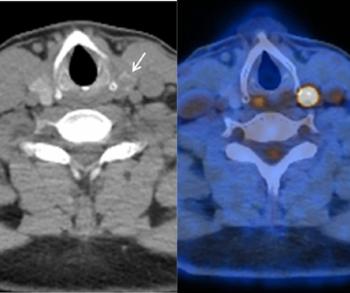
A Position of Strength
Who has the upper hand, the applicant or the hiring radiology practice?
The senior partner and the prospective new associate radiologist regarded one another across the bargaining table. (It was actually the partner’s desk, but let’s not quibble about the furniture just now.) The earlier stages of interview had gone by without any deal killing revelations for either party, and all that needed to happen for the associate to join the team was a successful negotiation of employment terms.
The partner knew he was coming from a position of strength. The job market, it was true, had warmed up in recent months, but it was still tough to find a good gig, so the applicant probably didn’t have that many other options lined up (let alone good ones). On top of that, they were in a geographically desirable area, so the tight market was even tighter locally. Finally, the applicant was a young, fresh-faced thing, without an accomplishment to his name other than his education and postgrad training.
So the partner, secure in his position of strength, confidently made a low-ball offer. Maybe if the applicant begged nicely enough he’d give it a token upward nudge.
The applicant knew he was coming from a position of strength. Even if the job market hadn’t caught fire just yet, the trend was headed in favor of job-seekers, and employers with half a clue would be looking to get their staffing done before things progressed further. Yes, the locale was desirable, but despite some lip service he’d given about having ties to the region he had a couple of other places he wouldn’t mind living if circumstances dictated. Finally, while he didn’t have a Bible length CV this early in his career, he knew his skills were cutting-edge, and he had energy and a work ethic vanishingly rare in most older-timers the partner might otherwise be interviewing.[[{"type":"media","view_mode":"media_crop","fid":"43742","attributes":{"alt":"","class":"media-image media-image-right","id":"media_crop_2071199874700","media_crop_h":"0","media_crop_image_style":"-1","media_crop_instance":"4828","media_crop_rotate":"0","media_crop_scale_h":"0","media_crop_scale_w":"0","media_crop_w":"0","media_crop_x":"0","media_crop_y":"0","style":"height: 200px; width: 200px; border-width: 0px; border-style: solid; margin: 1px; float: right;","title":"©Kalinin Ilya/Shutterstock.com","typeof":"foaf:Image"}}]]
So the applicant, secure in his position of strength, confidently asked for the moon. Maybe if the partner buttered him up sufficiently he’d charitably accept a smidge less.
As negotiations slowly but surely failed to proceed to common ground, both began to have the same thoughts regarding the other guy: He’s bargaining hard. Or is he? Maybe he’s just stubborn. Or he hasn’t come to grips with the reality of this situation. Or he’s not that bright.
They parted ways, each sure that the other guy would come to his senses. If not before the applicant left the building, then via phone in the next couple of days. But it didn’t happen…because they both knew themselves to be in positions of strength.
Newsletter
Stay at the forefront of radiology with the Diagnostic Imaging newsletter, delivering the latest news, clinical insights, and imaging advancements for today’s radiologists.



























